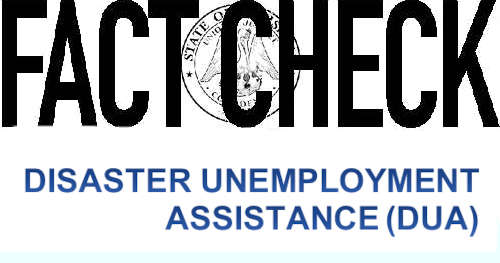By Murray Wennerlund published 3-29-2023 updated 3-29-2023
|
|

By Murray Wennerlund published 10-4-2022 updated 10-4-2022

By Murray Wennerlund published 10-4-2022 updated 10-4-2022
You will need to apply for your Disaster Unemployment Assistance with your state.
Your state will delay the launch of DUA and many states will claim not to have a method of paying the federal dollars.
It's important that you understand that most state unemployment compensation payouts come from a state generated fund and it's reimbursed by the federal government. In Louisiana and other states they look to delay any payment so to reduce the number of people eligible for the assistance.
From the state of your disaster as dated by FEMA or the day you evacuated to a safe location is the day you were unemployed.
The time period to which you are unemployed by the impact of the declared disaster is the date of the start of the disaster to the time you are able to return to work if self employed and the time you do return to work if employed by an employer that closed for a period of time due to the disaster.
Don't confuse the DUA of a storm related event with the DUA of the COVID-19 period. Your state will have all the information for you online. I'm sharing with you it's important to file for your DUA as soon as you can because their will be a 1 to 2 week waiting period which is not in most cases and based on your states policy retro actively paid.
Here's the information fact sheet text provided by the Dept. of Labor.
ELIGIBILITY REQUIREMENTS
In order to be eligible for DUA, individuals who meet one of the qualifying conditions above must also meet all the following eligibility requirements:
WHEN AND WHERE TO FILE FOR DUA
In the event of a disaster, the affected state will publish announcements about the availability of DUA. To file a claim, individuals who are unemployed as a direct result of the disaster should contact their State Unemployment Insurance agency
Individuals who have moved or have been evacuated to another state should contact the affected state for claim filing instructions. They may also contact the State Unemployment Insurance agency in the state where they are currently residing for claim filing assistance.
Applications for DUA must be filed within 30 days of the announcement of the availability of DUA in the state. Individuals must follow the instructions in the announcement and file for DUA based on the filing method used by their state UI agency (i.e., in-person, mail, telephone, or internet).
CONTINUED CLAIM CERTIFICATIONS
The individual must continue to file weekly or biweekly claims for DUA benefits according to the instructions given by the state agency where the DUA application is filed.
REQUIRED PROOF OF EMPLOYMENT
The individual will need to provide proof (e.g., income tax return, bank statements) to document employment or self-employment or to document work that was to begin on or after the date of the disaster. If proof of employment cannot be provided at the time the claim is filed, individuals have 21 calendar days from the time the claim was filed to meet this requirement. Failure to submit this documentation within the 21 days will result in a denial of DUA, and any benefits already paid will be considered overpaid. Individuals are required to repay any benefits overpaid.
THE DUA WEEKLY BENEFIT AMOUNT (WBA) PAYABLE AND BENEFIT DURATION
The weekly benefit amount (WBA) will be based on the gross wages of the individual. If the individual is self-employed, the weekly benefit amount will be based on the net earnings (income) from self-employment. Generally, benefits are calculated using the same formula used for state UI benefits however, if the individual qualifies for less than 50 percent of the state average UI WBA, the WBA will be increased to 50 percent of the state’s average WBA, with certain exceptions for part-time workers.
DUA benefits are generally paid for up to 26 weeks, beginning with the first week following the date the major disaster began, and ending with the 26th week following the date the major disaster is declared by the President.
DISQUALIFICATION AND TERMINATION OF DUA
An individual can be disqualified for DUA benefits or DUA benefits can be terminated if any of the following occur:
APPEALS
Any denial of DUA benefits may be appealed. Individuals must file the appeal within 60 days of the date the determination was issued.
FUNDING OF DUA CLAIMS
FEMA provides the funding for DUA benefit payments and the costs for states to administer the program. DUA payments are made by state UI agencies to eligible individuals unemployed as a direct result of the disaster.
FEDERAL TAXES
DUA benefits are subject to Federal income tax. Individuals may elect to have Federal withholding Individuals will receive Form 1099-G to file with their income tax return.
LEGAL AUTHORITY
Sections 410 and 423, Robert T. Stafford Disaster Relief and Emergency Assistance Act (Stafford Act) (42 USC 5177) Title 20, Chapter V, Part 625, Code of Federal Regulations (20 CFR Part 625), as amended.